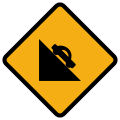 The guiness book of records states that Baldwin Street in Dunedin, New Zealand is the steepest street in the world. According to the figures, the Baldwin St is 359m in length (horizontal measurement) with a total elevation gain of ~80m. The plaque states that «over the 161.2 metre length of the top section, it climbs a vertical height of 47.22 metres, which is an average gradient of 1 in 3.4.1. On its steepest section, the gradient is 1 in 2.86. However, there is some dispute over this as only 6m out of the total street length at the steepest gradient.
The guiness book of records states that Baldwin Street in Dunedin, New Zealand is the steepest street in the world. According to the figures, the Baldwin St is 359m in length (horizontal measurement) with a total elevation gain of ~80m. The plaque states that «over the 161.2 metre length of the top section, it climbs a vertical height of 47.22 metres, which is an average gradient of 1 in 3.4.1. On its steepest section, the gradient is 1 in 2.86. However, there is some dispute over this as only 6m out of the total street length at the steepest gradient.
I’ve seen Baldwin Street in the flesh and was somehwat disappointed – in fact the first part is almost flat! It then ramps up considerably towards the top section. Hence, the average gradient of the entire street is more like 1 in 4.375. That’s the trouble with New Zealand – they tend to exaggerate a lot. So I would like to challenge that record today by making yet another claim for the worlds steepest street:
 After scouring over online topographic contour maps, I have chosen Calle Monroy in the district of Santa Ursula, Tenerife, Canary Islands, Spain. I do not possess a global positioning system (GPS) to accurately gauge its gradient. Nevertheless, we can estimate that the length of this street from the data provided by Google maps. Monroy Street descends from 638 to 430 metres in a length of only 740 metres. Therefore, the average gradient over the entire street is 28.1% (a slope of 1 in 3.56) compared to Baldwin Street with an average gradient of only ~22.3%.
After scouring over online topographic contour maps, I have chosen Calle Monroy in the district of Santa Ursula, Tenerife, Canary Islands, Spain. I do not possess a global positioning system (GPS) to accurately gauge its gradient. Nevertheless, we can estimate that the length of this street from the data provided by Google maps. Monroy Street descends from 638 to 430 metres in a length of only 740 metres. Therefore, the average gradient over the entire street is 28.1% (a slope of 1 in 3.56) compared to Baldwin Street with an average gradient of only ~22.3%.
 Besides, the photo to the left shows that the steepest part of the road has a slope with a ~40% gradient (caculated by the pixel method)! Now until some bright spark can come up with another street with a steeper average gradient, which can be confirmed, I’m going out on a limb and labelling Monroy Street the «steepest street in the world», albeit unoffcially! Or if you prefer: «the street with the highest average gradient». But I think the first one is more correct.
Besides, the photo to the left shows that the steepest part of the road has a slope with a ~40% gradient (caculated by the pixel method)! Now until some bright spark can come up with another street with a steeper average gradient, which can be confirmed, I’m going out on a limb and labelling Monroy Street the «steepest street in the world», albeit unoffcially! Or if you prefer: «the street with the highest average gradient». But I think the first one is more correct.
Oh and as far as I am concerned, taking slope readings only on the very steepest parts of the same street is cheating. If that were the case, I’d claim the inside portion of this street. Measured over a few centimetres, the gradient is technically about 80% over the length of one particular piece of aggregate!! Hell, you could probably even find a patch of tarmac with a slope greater than 100% on if you used a micrometer. Obviously, that’s not at all fair. For this reason alone, I challenge people to take the average slope over the whole length of the street. Take the reading from the very beginning to the very end of the same street, don’t leave any sections out, and neither can you add two or more street sections together. Also, I think it should be compulsory that the street has to have a name recognised by the local council…
 If you take the entire length of the street and then determine the average gradient the way I propose, Monroy Street (Calle Monroy) appears to come out as the winner. This street does not have any flat parts; it is the steepest continuous grade sealed street with public access that I am aware of, also plainly visible in Google Maps.
If you take the entire length of the street and then determine the average gradient the way I propose, Monroy Street (Calle Monroy) appears to come out as the winner. This street does not have any flat parts; it is the steepest continuous grade sealed street with public access that I am aware of, also plainly visible in Google Maps.
OTHER CANDIDATES:
One other very steep street that I spotted also resides in the district of Santa Ursula. This particular street, which includes Calle Los Tosqueras for most of its length, descends from 1012 to 348 metres in a length of 2.5km, although the top section is not paved. Furthermore, Calle Los Tosqueras diverts horizontally while the steeper adjoining street has a different and as yet unknown name.
However, the neighbouring zones of La Corujera and Toscas de Ana MarÃa also provide many other possible candidates for the world’s steepest street. Camino el Monte, Calle La Calzada, Calle Las Turcas, Calle Los Castaños, Camino Los Pajales and Camino La Banderola are all noteworthy, boasting average gradients close to or exceeding 25% slope. Other extremely steep streets in the North of Tenerife worth a mention are Calle Argentina in Icod de Los Vinos and last but not least: Camino de Chasna in La Orotava.
Tags: Island Life, Ride the Volcano! // 6 Comments »
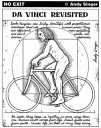 All cyclists know that cycling can be an expensive hobby, but it doesn’t have to be. Bicycles are the most efficient form of human transport that we know of. But if you’ve started to spend ridiculous amounts of money in this sport, you might want to re-analyse the situation; if you’re flaking out loads of cash on all the latest training gizmos and whatnot, is it such an environmentally friendly sport after all? Where does your money actually end up? What do those recipients do with it? Consumers don’t tend to weigh these things up enough before purchasing something. I think I became a semi-retro-grouch when I turned 30 last year. So without further delay, here are a bunch of easy ways to help you save your hard-earned money: (más…)
All cyclists know that cycling can be an expensive hobby, but it doesn’t have to be. Bicycles are the most efficient form of human transport that we know of. But if you’ve started to spend ridiculous amounts of money in this sport, you might want to re-analyse the situation; if you’re flaking out loads of cash on all the latest training gizmos and whatnot, is it such an environmentally friendly sport after all? Where does your money actually end up? What do those recipients do with it? Consumers don’t tend to weigh these things up enough before purchasing something. I think I became a semi-retro-grouch when I turned 30 last year. So without further delay, here are a bunch of easy ways to help you save your hard-earned money: (más…)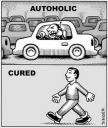

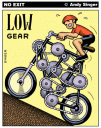

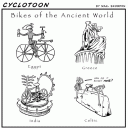
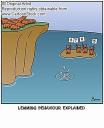

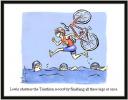
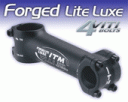



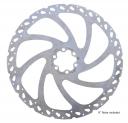


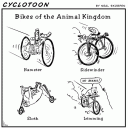


 The guiness book of records states that
The guiness book of records states that 







